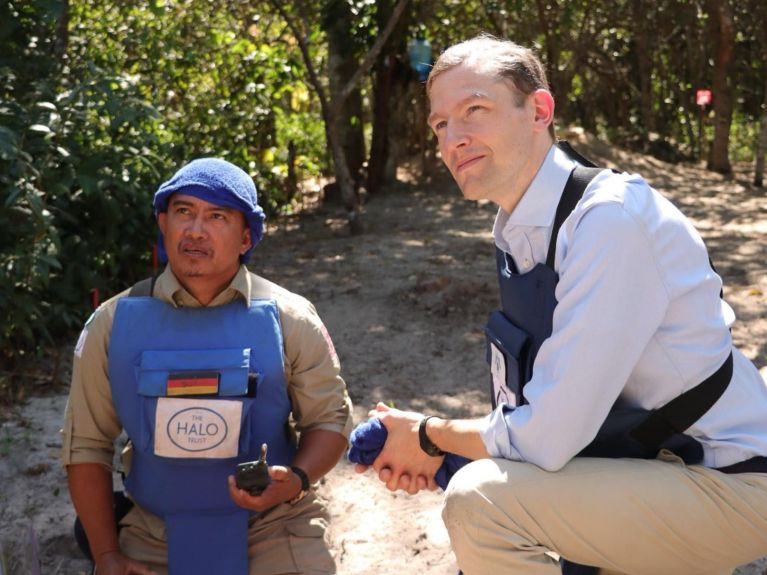An invisible threat to 60 million people
The Federal Foreign Office supports efforts to remove unexploded ordnance around the world, aiming to protect the civilian population of current and former conflict areas.

Eike Hesselbarth is in charge of coordinating humanitarian demining at the Federal Foreign Office. Humanitarian aid, diplomacy and technology are all parts of his work.
Mr Hesselbarth, around 60 million people worldwide are still living in areas in which mines or unexploded bombs are a daily threat. Why do the risks remain so high, despite humanitarian action?
On the one hand, there are currently conflicts in which ammunition is used that can leave behind unexploded ordnance, for example when Russian missiles are attacking Ukraine. On the other hand there are explosives that remain from former conflicts that can be found in the ground even decades later, such as mines, unexploded bombs and artillery shells. They frequently still have live detonators and even slight vibrations can cause an armour-piercing shell to explode, for example. There are millions of mines and unexploded bombs in countries such as Ukraine, Syria and Afghanistan. Some of these were placed intentionally, others were left behind after attacks. There is often a lack of funding or of suitably safe conditions for removing these, despite the strong commitment of Germany and other donors.

What does the Federal Foreign Office do to help improve the situation around the world?
Germany is among the world’s largest funding providers for the removal of mines and unexploded ordnance. The Federal Foreign Office provides funding for demining through specialised NGOs. These activities are based on the 1997 Ottawa Convention under which Germany undertook to refrain from the use or production of mines and to help affected states eliminate the related humanitarian consequences. The projects are realised based on humanitarian principles: neutrally, independently and wherever action is needed most urgently.
What are the current focus areas?
Based on the latest demand analysis performed by the United Nations, Germany is supporting projects in Syria, Ukraine and Gaza, among other places. The help we provide ranges from awareness raising in schools, via demining, through to taking care of people who were injured in explosions of such left behind ordnance.

What does modern-day demining look like?
In addition to traditional metal detectors, we are also using drones and artificial intelligence (AI) to identify hazard zones. Digital maps and AI can help in analysing assumed hazard zones, however, it must still be verified by human beings on site, whether a cleared area can be used safely. High standards were drawn up for this purpose, and these are applied by the non-governmental partner organisations. New technologies will not be able to replace the local teams’ on-site demining work in the foreseeable future.

About the interviewee
The diplomat Eike Hesselbarth was born in 1987. Before the start of his higher foreign service career, he initially worked in the private sector. His work at the Federal Foreign Office focusses on humanitarian aid and landmine clearance. Together with his team, he coordinates international projects for removing explosive remnants of war.


